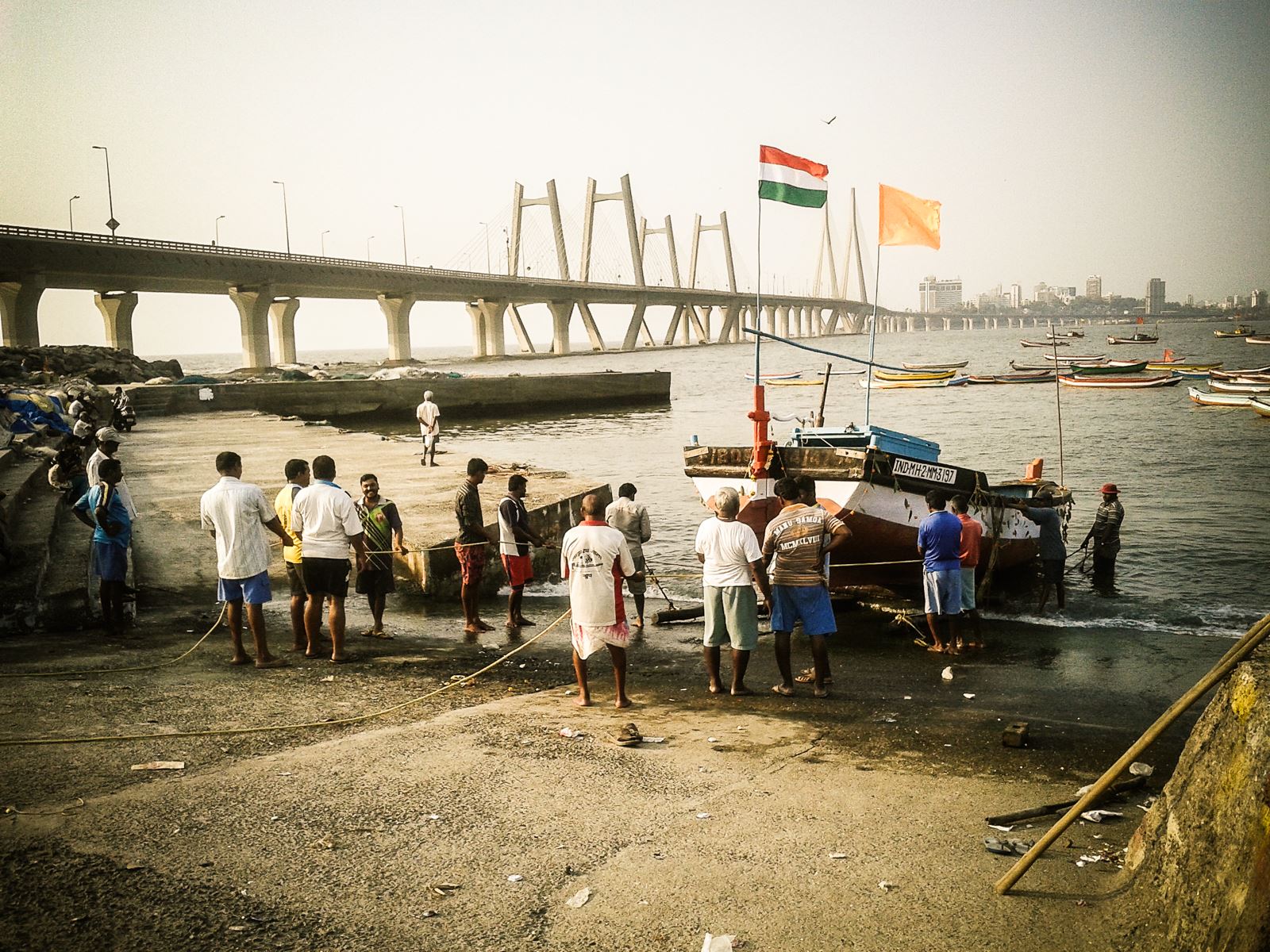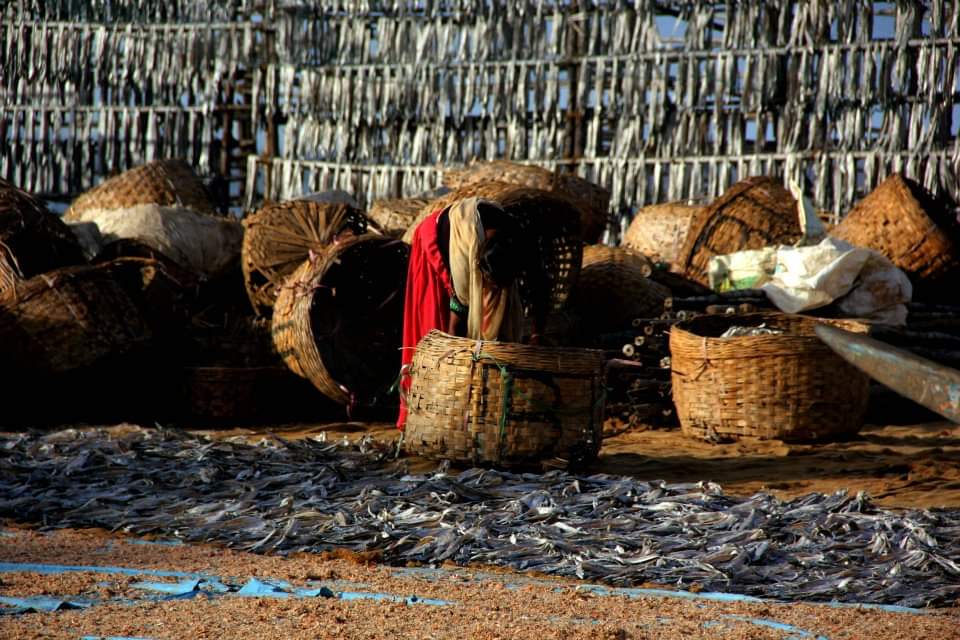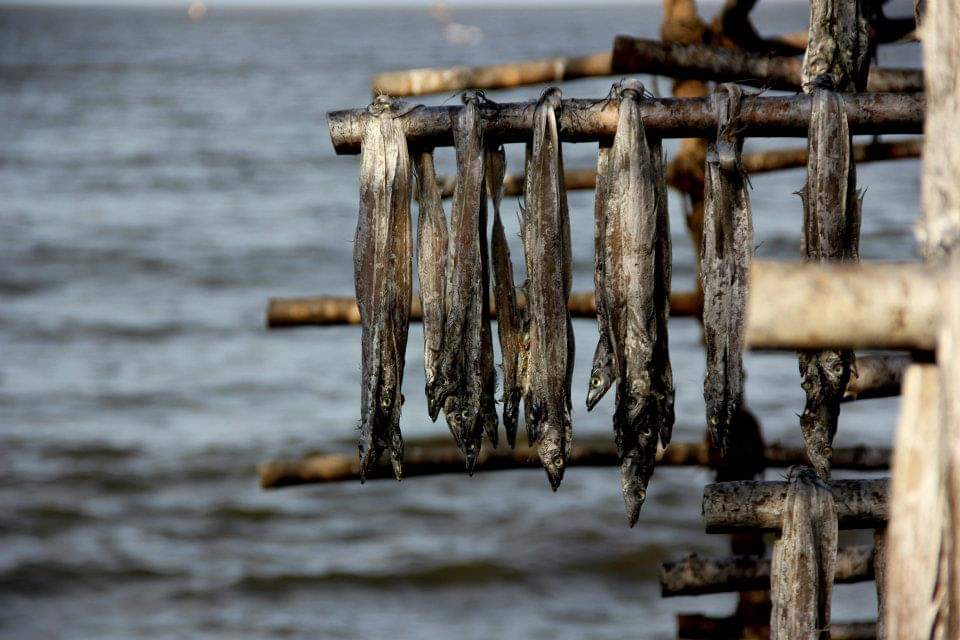Pushed to the edges, these Kolis in Mumbai continue to hold on to an age-old way of life
These fisherfolk, said to be one of the earliest inhabitants of Mumbai, continue to stick to traditional values, customs and culture despite the challenges posed by being in the heart of the city


The kolis were here first.
This is an oft-repeated sentence in books, conversations, lectures and studies that revolve around Mumbai history. They might have been pushed to the edges but the Kolis, and their koliwadas — fishing villages, continue holding on to an age-old way of life despite the odds stacked against them.
Amongst others, Worli Koliwada is perhaps the most visible, jutting out as a narrow strip of land, with cars zipping past it on the Bandra Worli Sea Link. And naturally, the most locally bypassed. Yet, it makes its presence felt.
The Worli Fort rising from the cluster of colourful houses, the blue, orange and white boats dotting the sea, with bhagwa flags, and the waves dashing against the rocks do catch the eye. More than 500 years old, Worli Koliwada is a poignant reminder of a unique cultural identity of the Koli community — their personal, shared living and fishing space.
It is believed that fishermen moved up and down the western coast of India, never really settling at any place. But in the 12th century when king Pratapbimb established his formal kingdom Mahikawati (Mahim), he invited 66 kulas or tribes to become a part of his new kingdom, and Kolis were one of them. The original inhabitants of Worli Koliwada were the nine Patil brothers who invited others from their tribe and the koliwada grew.

The original inhabitants of this growing fishing village are the ‘Son’ Kolis, who have the highest status among Kolis. The name ‘Son’ comes from the golden or yellow colour of turmeric sacred to Khandoba, the family god of the Kolis. The Son Kolis are endogamous and there have been instances when kolis who married outside the community have been excommunicated, but that is slowly changing.
Sharing space with the ‘Son’ Kolis are the ‘Mahadev’Kolis, the first Koli migrants into this microculture and the Christian Kolis, who converted to Christianity under the Portuguese. Interestingly, the Christian Kolis retained some of their pre-Christian traditions, mixing it with their acquired identity — one encounters this ad-mixing right at the entry to the village at The Mother Mary statue. Mother Mary is dressed in a bright saree and gold jewellery like the Kolins, adorned with marigold garlands hung as offerings.
It does not end there. Little grottos with Virgin Mary with Baby Jesus dot the area. And, at the land’s end next to the Vetal Deo temple, stands a small church with the idol of Jesus placed on a small fishing boat, in keeping with the fishing tradition of the Koliwada. It is here that the Christian Kolis hold a mass to mark the beginning of the fishing season.
“The day” that marks the new business is celebrated as Narali Punaw or Purnima by all Kolis. The fishermen believe that after this day, the wind strength and directions favour fishing. On this day, they offer coconut to the sea to appease the sea and wind gods. The coconuts are decorated and taken in processions led by songas (people in fancy dress) followed by vajantri (people who play musical instruments) and then people with offerings. The Police Patil — the headman — enters the sea first until the water reaches, immersing the coconut. The others then follow.
The other important festival celebrated here is shimga or Holi.

There is also celebratory singing or dancing at the launch or return of boats at the bandar, purchase of a new boat, betrothal ceremony or shakarpura, naming ceremony, wedding, and religious festivals like the Mahashivratri and Shravan at the Mahadeo temple or the Golpha Devi festival.
Golpha Devi is the tutelary goddess of the Son Kolis of Worli. No auspicious task, personal or community-related, is carried out without invoking her through a ritual known as the kaul. It is almost like seeking out the goddess to ‘take a call’ on pending decisions. The kaul involves the temple priest placing two flower buds to the right and the left of the idol and interpreting it as a good or a bad omen, depending on which bud falls first. The Golpha Devi temple houses the idols of Golpha Devi, Harna Devi and Sakba Devi, carved in stone. However, since fewer Kolis than before now go out fishing as the younger generation leaves the village for jobs unrelated to fishing, the kauls have reduced.
The Golpha Devi festival has also reduced from a three-day affair to an overnight celebration. One temple’s loss in kauls can be another’s gain in footfalls. The Mahadev temple, established in 1904, has since attracted more people as it has become a site not just for worship but also programmes like yoga, reading from scriptures, meditation, music, etc.
Besides the shared rites, rituals and authentic food served in patravali, the narrow zigzag lanes and steps running through the Koliwada are also unique to the place, opening out, at regular intervals, into small squares that transform themselves into hangout places, open spaces for drying fish, cricket fields, or gossip and wedding venues depending on the need.

Colourful and loud, the houses of the Kolis of Worli Koliwada reflect their lives. Painted in purple, yellow, mustard, blue, orange and myriad other hues, the houses form a distinctive visual language. Inside, with the exception of new constructions, most houses have a small oti (verandah), chool (kitchen space), a common room and a devghar, or temple space.
It is said the most curious feature of some Son Koli homes isn’t the spatial arrangement but some photos hanging on the walls — the Son Kolis have the tradition of dressing up a corpse, placing it in a sitting position, photographing it and then hanging the picture on the walls. If one peeps into some houses, one might see pictures of old people — dead or alive, one cannot say!
In a Koli household, especially in Worli Koliwada, women hold a position of power. That is because the kolins, known to be aggressive and quarrelsome, bring the kurga, or daily earnings, to the household. Men fish (and drink!); it is the women who sell the catch. She is an economically productive member of the family; their custom of ‘bride price’ is a recognition of her importance.
The concept of ‘bride price’ is not practiced in the Hindu culture per se. Here, it is proposed and solemnised in the presence of the Patil and elders of both the families during the Shakarpura, or betrothal ceremony. If a Koli is unable to pay a ‘bride price’, he is either restricted in his selection of a partner or remains a bachelor, a prospect unacceptable as his occupation demands a wife. The Christians Kolis have the option of embracing religious vocation if they don’t marry.

There are periods of activity and inactivity, of people flitting in and out, songs, celebrations, and then there is business, helmed by the Nakhwa Sangha, a kind of cooperative that facilitates the purchase of diesel and ice in bulk, oil subsidies by the government and loan schemes for the fisher-folk. It acts as an intermediary. Even though it has a system of the domestic business cycle in place, it is fraught with trouble. This is the grey that the fisherfolk face.
First, there is the problem of foreign trawlers that take up 75% of their catch and despite repeated protests, their licenses have not been cancelled by the government. Second, due to incessant development, the breeding grounds of fishes like the mangroves, have been compromised. Third, because Worli Koliwada occupies prime real estate in central Mumbai, there has been an influx of tenants, ‘outsiders’ who do not understand the culture and festivities. If the Kolis resist, there is a chance that tenants might leave, depriving them of the much-needed rental income. Fourth is stiff competition from male migrants, who go door-to-door selling fish. Fifth, trash finds its way to the shores of Koliwada. And, finally, the matter of instilling pride in the youngsters who no longer live by fishing, so the culture doesn’t die out but stays and grows.
If one stands on the ‘conserved’ (read painted) Worli Fort built by the British in 1675 as a lookout for enemy ships and pirates, the panoramic view has Bandra on one side, Worli on the other, Bandra Worli Sea Link along, the village behind and the sea on three sides — all seem to be in conversation with each other. Though the Bandra Worli Sea Link has become a lifeline for commuters in Mumbai, it acts as a visual boundary for the Kolis of Worli Koliwada. It has reduced catch, changed fish patterns and broken sea currents. The proposed coastal road (stalled at the moment) threatens the same or worse — it may submerge the socio-economic and cultural identity of the vulnerable by providing mobility and prosperity to others.
The village will continue to hold on. If we care — not just when it features in a Coldplay or Beyonce song or is part of a film backdrop or a song or dance sequence that often stereotypes the Kolins in nauwaris with baskets on their heads!
To enter Worli Koliwada is to leave the city behind. To dismiss this unique Koli ethos as a ‘slum’ – ignorance.
Shriti K Tyagi is the founder of Beyond Bombay and Beyond Delhi, niche travel collectives, unfurling cities and histories for 13 years
Views are personal. The featured image has been provided by Vaydehi K.

